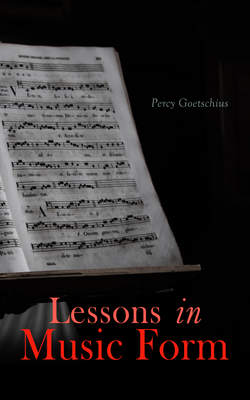Читать книгу Lessons in Music Form - Percy Goetschius - Страница 3
На сайте Литреса книга снята с продажи.
FOREWORD.
ОглавлениеTable of Contents
The present manual treats of the structural designs of musical composition, not of the styles or species of music. Read our AFTERWORD.
It undertakes the thorough explanation of each design or form, from the smallest to the largest; and such comparison as serves to demonstrate the principle of natural evolution, in the operation of which the entire system originates.
This explanation—be it well understood—is conducted solely with a view to the Analysis of musical works, and is not calculated to prepare the student for the application of form in practical composition. For the exhaustive exposition of the technical apparatus, the student must be referred to my "Homophonic Forms."
The present aim is to enable the student to recognize and trace the mental process of the composer in executing his task; to define each factor of the structural design, and its relation to every other factor and to the whole; to determine thus the synthetic meaning of the work, and thereby to increase not only his own appreciation, interest, and enjoyment of the very real beauties of good music, but also his power to interpret, intelligently and adequately, the works that engage his attention.
The choice of classic literature to which most frequent reference is made, and which the student is therefore expected to procure before beginning his lessons, includes:—
The Songs Without Words of Mendelssohn; the Jugend Album, Op. 68, of Schumann; the pianoforte sonatas of Mozart (Peters edition); the pianoforte sonatas of Beethoven.
Besides these, incidental reference is made to the symphonies of Beethoven, the sonatas of Schubert, the mazurkas of Chopin, and other pianoforte compositions of Mendelssohn, Beethoven, Chopin, and Brahms.
PERCY GOETSCHIUS.
BOSTON, MASS., Sept., 1904.
